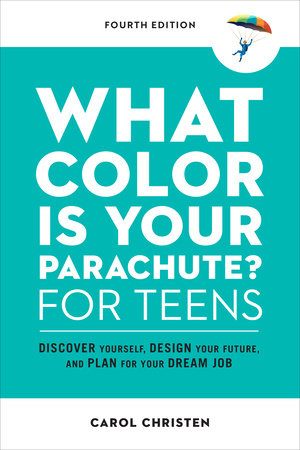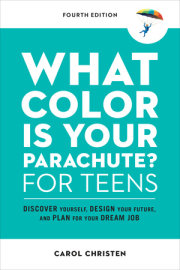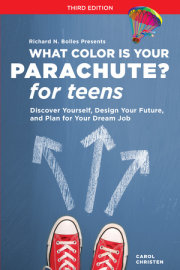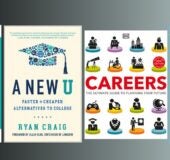Preface to the Fourth Edition “Here be dragons” was printed on ancient maps to indicate the unknown parts of the Earth. “Challenges ahead” might be a good warning for the yet-to-be discovered parts of your future. The average employee in the United States works more hours in a year than a thirteenth-century peasant (1,811 versus 1,620!), which means it’s very important that you find work you like.
How can you find work you’ll enjoy? Make a plan! What you need most to make that plan is time. You can’t just order up a career plan like a burger. To make that plan you need time to do research—first on yourself. That kind of research is called selfassessment. Self-assessment leads to self-awareness which leads to good education and career decisions. Research about yourself fills in the Parachute on the previous pages. Once you know the details about what makes a good job for you, you need time to research the world of work to find jobs that match your Parachute. Next, you need time to research your least expensive option for higher education to get the skills and knowledge to start your first career path.
Keep in mind that there is no one path for everyone. It’s up to you to create a plan that will build a bridge between where you are today and where you want to be. You don’t need to do this work alone. Having an adult that can lovingly keep you on task is a big help. It can take several months to complete your Parachute, research the labor market to find jobs that fit, find higher education you can afford, and create a detailed plan to get you where you want to go. What’s the payoff for taking the time to create such a plan? Being a twenty-something living a life you love. Young adults with plans achieve their goals.
This book was written to help you create a plan for your future, and achieve it. The discovery exercises in each chapter will help you learn what you want from life and work and—just as important—how to get it.
Introduction Putting together a career plan is like solving a puzzle. There are lots of different pieces of information about you and potential jobs that have to be found and sorted through. What bits are high priority for your happiness? What is nice but more like frosting on a cupcake? What’s absolutely a no-go? All of these pieces of the puzzle will help you put together a detailed plan for getting the life you want.
Through your school, you may have access to assessments such as The Self-Directed Search, Strong Campbell, or Myers-Briggs. Take them. Assessments can yield clues to your career puzzle. The more clues, the faster the puzzle of your future comes together.
But there’s one aspect of
What Color Is Your Parachute? for Teens that makes it different from standardized assessments:
Parachute focuses on you and your experiences. Standardized assessments point you toward jobs before you know what makes a job good for you. Through discovery exercises in this book, your previous work and life experiences are examined to find valuable clues to what you need for job satisfaction. Creating your Parachute from the discovery exercises allows you to riffle through your experiences for your likes, dislikes, strengths, abilities, interests, and goals. As you learn about potential careers, your Parachute will encourage you to explore certain jobs and avoid others. The journey to your future is an adventure that holds fascinating discoveries about yourself and how you can build a life you love financed by work you enjoy. Ready? Let’s get started.
Copyright © 2022 by Carol Christen. All rights reserved. No part of this excerpt may be reproduced or reprinted without permission in writing from the publisher.





